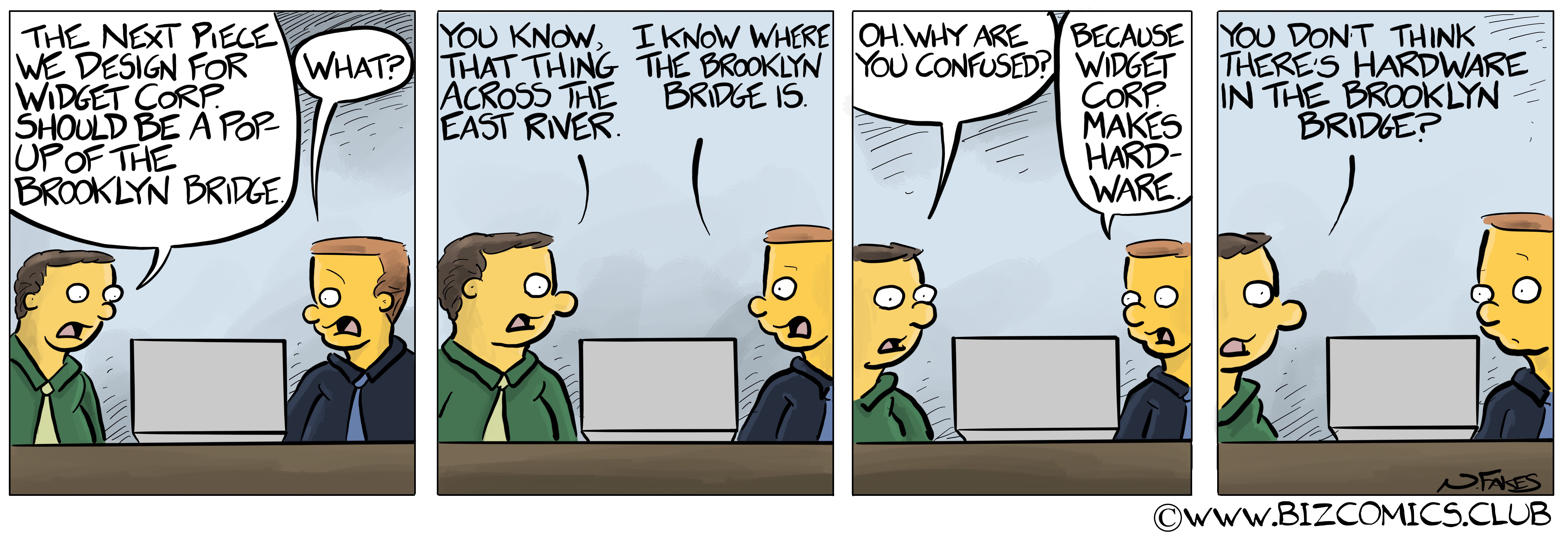A Bridge Too Far

We love cartoons. The only thing we might love more than cartoons is language. And the only thing we might love more than language is the way it’s tortured, twisted, and traumatized — wittingly or unwittingly — in people’s attempts to construct arguments. By argument, we mean a process of reasoning, purporting to be based on a valid premise and employing (or using what the creator of the argument presumes or hopes will pass for) sound logic.
One of the most useful books in our collection is With Good Reason, in which Morris Engel introduced us to fallacies of informal logic. In addition to making us better writers, it made us more discerning, more analytical, and more skeptical readers and listeners. It gave us keener eyes and ears. And it enabled us to recognize the logical fallacies perpetrated — deliberately and inadvertently — by our dearly beloved brethren in this here marketing profession (to say nothing of politicians).
Case in point: The yo-yo on the left in the cartoon above manages to pack at least four fallacies of information logic into one stupendously bad and rationally ineffective marketing idea. In no particular order, they are:
- The Fallacy of Sweeping Generalization. Notice how our hero applies a general rule (bridges contain hardware) to a specific case in which the rule is not applicable (people will comprehend that the Brooklyn Bridge must contain hardware).
- The Fallacy of False Equivalence. Without hurting himself, said yo-yo posits a situation of logical and apparent equivalence (bridges contain hardware), when, in point of fact, there is no such equivalence, logical or apparent.
- The Fallacy of Begging the Question. Here our favorite chooch provides the ostensible conclusion of his would-be argument (bridges contain hardware) as its premise (because bridges contain hardware, people must know the Brooklyn Bridge contains hardware).
- The Fallacy of Circular Reasoning. Without so much as dislocating a joint, the chucklehead in question begins his argument (bridges contain hardware) with the point with which he wants to conclude it.
There are two morals to this story:
- Buy With Good Reason. It will make you a better consumer of all alleged information.
- Believe half of what you see, son, and none of what you hear.
Hey! Wanna buy a bridge?
This content is available for syndication. Please contact us for details.

0 Comments